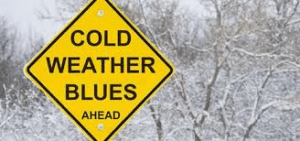Given where we live and the long, cold, dark winters we have a lot of people struggle with Seasonal Affective Disorder. Here’s some help from our Registered Social Worker Katarina Schmidt.
Seasonal Affective Disorder (SAD) – Part 2
How to cope with SAD
Part 1 of this series discussed some signs and symptoms associated with Seasonal Affective Disorder (SAD). Maybe you identified with some of the symptoms you read from part 1, now what? Here are some general tips and tricks, followed by some more intensive options to look into to help you cope with SAD.
General tips and tricks:
- Getting outside during daylight hours, even when it’s cold!
- Maintaining a consistent bedtime and wakeup times
- Planning fun activities and events to give yourself something to look forward to during the cold months (anything from going to the movies, attending a concert, to booking a hot holiday)
- Trying a new hobby or returning to an enjoyable hobby
- Spending time with friends and loved ones on a regular basis
More intensive options:
- Bright Light Therapy: This involves obtaining a light box that produces 10,000 lux and sitting in front of it for 30 minutes in the morning. You do not need to be staring into the light in order for the benefits, but you do want the light to be at eye level, not overhead. You can have the light angled 30-60 degrees, and roughly 25-35 inches away from you. Some enjoy getting their 30 minutes in while eating breakfast, enjoying their morning coffee, putting their makeup on, or while they read.
- Dawn Stimulation: This involves the use of a light that simulates dawn, with light beginning at a dim level and slowly getting brighter. These dawn simulation lights are to be set ahead of time so that they turn on 60-90 minutes before you need to be awake. They can also help with difficulty in waking up in the morning and associated drowsiness.
- Booking in with a counsellor to figure out how to address the symptoms you experience
- Medications used to treat other forms of depression and vitamin D may also help with SAD. Please discuss these options with your doctor to see if they’re a good fit for you.
Source: Praschak-Rieder, N., & Willeit, M. (2022). Treatment of seasonal affective disorders. Dialogues in clinical neuroscience.
- Katarina Schmidt, MSW, RSW
Thanks, Kat! A lot of people struggle with this and I’m sure they’ll find your info helpful.
Kat has her Masters degree and is a Registered Social Worker. She specializes in the following areas:
– Stress
– Anxiety
– Panic Attacks
– Depression
– Grief
– Self Confidence
– Self Esteem
– Self Compassion
– Complex Trauma
– Bipolar Disorder
– ADHD (Attention-Deficit / Hyperactivity Disorder)
– ASD (Autism Spectrum Disorder)
– FASD (Fetal alcohol spectrum disorders)
– Mental Health Issues
– Communication Issues
– And More!
Kat offers Individual sessions for Adults.
Book your appointment with KAT here.
Cheers to heading off the cold weather blues.
Penney

